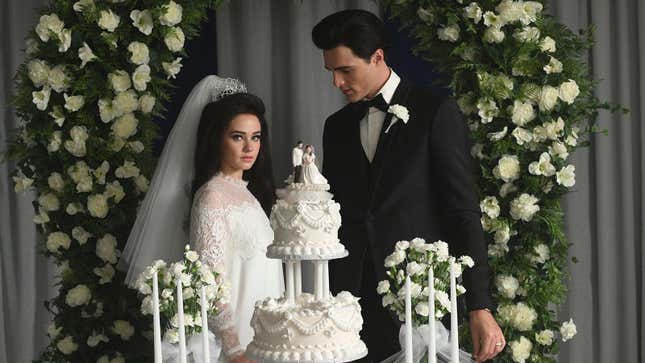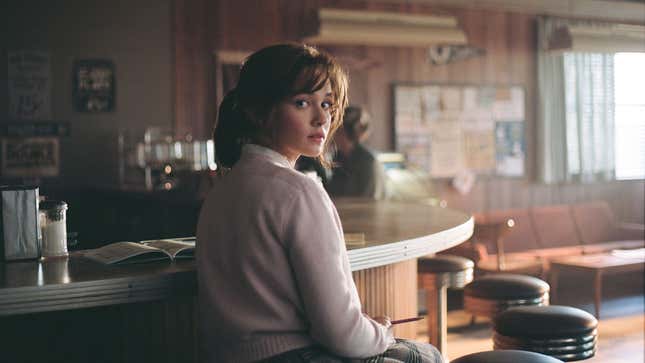Sofia Coppola Sanitizes Elvis’ Cruelty Towards His Young Bride in ‘Priscilla’
Compared even to Priscilla Presley's own memoir about her tumultuous courtship and marriage, the biopic gives Elvis a good edit.
EntertainmentMovies

Framing Priscilla Presley as a cinematic hero poses a certain challenge in 2023—at least the version of Priscilla Presley that features in her 1985 memoir Elvis and Me. At age 14, she was plucked from a soda shop near a U.S. army base in Germany and thrust into a life that she barely had tools to understand as the girlfriend and eventual wife of Elvis Presley. In her telling, the star plied her with the uppers and downers he took, told her how to dress and do her makeup, forbade her from pursuing any kind of career (“When I call you, I need you to be there,” is her recollection of his rationale), denied to her persistent gossip that he was romantically involved with peers like Nancy Sinatra and Ann-Margret, and lashed out—sometimes physically—when she expressed opinions he didn’t like. To stay with him, she kept her head down and went along for the ride. In all, they were together for roughly 12 years, having met in September 1959 and separated in February of 1972.
Simply withstanding, even in a dream world curated by the once most famous musician in the world, doesn’t make for a visually thrilling story. It’s easier to compensate for this narrative sparsity in a memoir, where impressions and opinions help shape the story. It’s much harder to do this in an externalizing medium like film, and Cailee Spaeny’s blank performance as Priscilla, appropriate as it may be as a way of conveying that social armor, is just one of the issues with the slog that is Sofia Coppola’s biopic Priscilla.
The movie was adapted by Coppola from Presley’s memoir and is playing this year’s New York Film Festival. But Priscilla is missing Coppola’s typical visual flair. It’s drab and washed out, with so many of its scenes backlit as if Coppola was determined to use the same lighting as in her 1864-set film The Beguiled. Then it made sense; here it just cakes everything in murk. The film falls into the biopic trap of trying to do way too much in such little time—the entirety of the Priscilla-Elvis relationship is compressed into less than two hours. It feels less like an auteur’s vision than a TV movie—Elvis and Me was already adapted into a TV movie in 1988, which makes Priscilla effectively a remake.
-

-

-

-

-

-

-

-

-

-

-

-

-

-

-

-

-

-

-

-

-

-

-

-

-

-

-

-

-

-

-

-

-

-

-

-

-

-

-

-









































